|
OK, So this week we are back on our series of my favorite Smallmouth patterns and this one may be my favorite. The O'Neill's Controlled Chaos is a pattern developed over the past few years. This fly is a direct decedent of Mike Schultz's Swinging D and Eric Snyder's Twisted Swinger. The Swinging D is a fantastic fly, one of the best Smallmouth flies out there. It takes a long time to tie. Mike himself offers a stripped down version to combat this issue. My buddy Eric Snyder stripped it down a little more with his pattern the Twisted Swinger. The Controlled Chaos is stripped down even more giving what I feel is good balance between a fly with the action that I want and time spent at the bench. More of a platform really, the possibilities are endless. When fishing this fly you want to throw it on an intermediate or a type 1 sink tip on a shore leader. The idea here is the foam head will try and float the fly and the line will try to sink it. The result is a battle of wills that give this fly incredible action. Originally designed as a Smallmouth pattern, we have successfully landed Smallmouth, Largemouth, Trout (Rainbow, Brown and Brook) Chain Pickerel and Striper to name a few. Size can be adjusted by modifying the hook, shank and head size. This one is about 3.5 / 4 inches and will throw nicely on a 7 weight. This one is in "Bleeding Shad" color. We also use Black / Chartreuse and Fire Tiger. Recipe; Hook; Partridge Attitude Extra #1 Tail; one white and one Pearl Grey Marabou Blood Quill Flash; 2 or 3 strands of silver Flashabou Body; Complex twist of Schlappen and Polar Chenille UV silver. Shank; Flymen 35 mm (1 3/8 inch) shank Body; Complex twist of Schlappen and Polar Chenille UV silver. Collar; Senyos Laser Dub red / white Head; Rainey's foam diver head size small Norvise products used; Rotary Norvise, Magnum Hub, Auto Bobbin, Saltwater Jaw  Tie the tip of both feathers and palmer forward until all of the fibers are on the hook. Take care not to trap any of the fibers as you are wrapping. Use your bodkin or a brush to pick or brush out the tail as you are wrapping forward. Remember, if you are using a Norvise you can just spin the vise. To see a video of how to make the Complex Twist with the Norvise click HERE  Palmer the complex twist forward to the eye of the hook. Take care to stroke the brush reward after each turn so the fibers are not trapped. Tie off and clip the brush at the eye of the hook. Use your bodkin and a brush to pick / brush out the body of the fly. This is the completed tail section of the pattern. 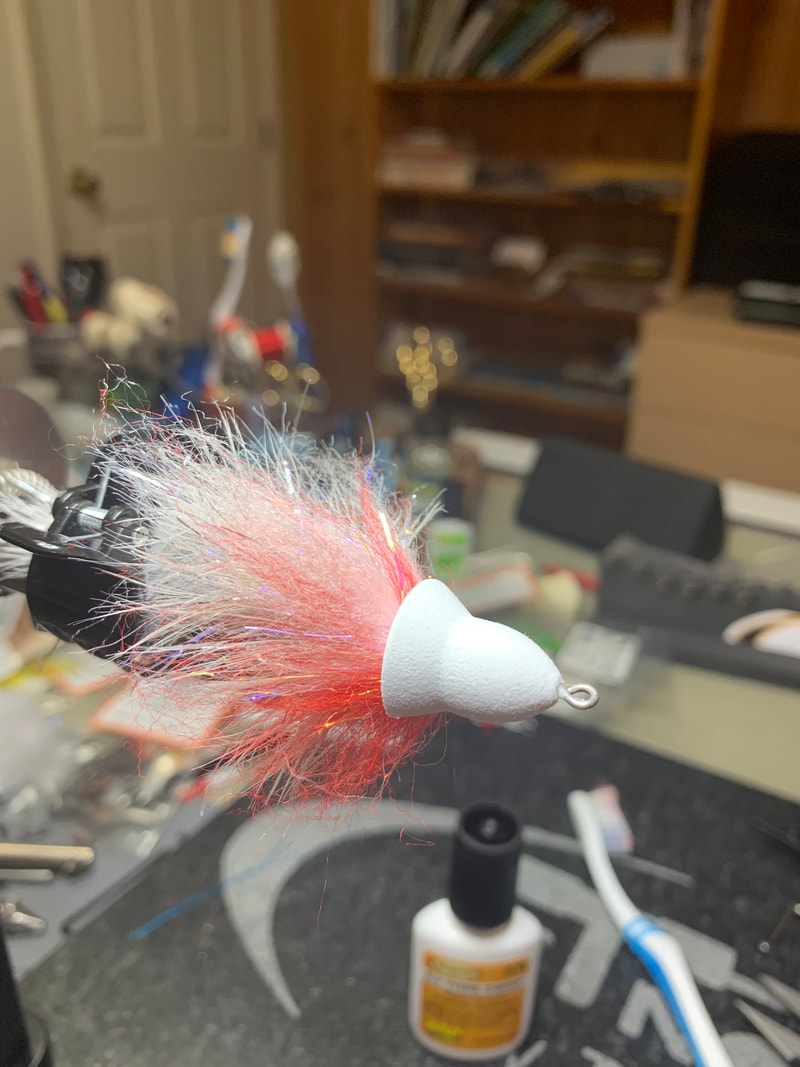 Coat the thread base and the front of the collar with a heavy dose of Zap-A-Gap and slide the head on over the shank. You have about 5 seconds before the glue takes hold so get it on and positioned quickly. You will only get one shot! Build a nice thread dam in front of the foam and head cement this to finish off the fly. The last three pics show the finished fly. As mentioned this Bleeding Shad color combo is a favorite of mine followed closely by Fire Tiger.
When fishing be sure to mix up your retrieves and most importantly pause between strips. You will be surprised to see, even when you are not moving the fly it is always in motion. Often the strikes will come during the pause. I hope you enjoy tying and fishing this pattern. It has become one of my favorites over the past few years. Till next time... Tight lines - Tim As mentioned in my "5 favorite Smallmouth Flies" post a few weeks ago, any Smallie fisherman worth his salt has a large assortment of Poppers. Smallmouth bass were tailor made for fly fishing. I have often said "pound for pound Smallmouth are the hardest fighting freshwater fish that swims". I dont think any true Smallie addict would argue that statement. Add to that a fish that is willing, dare I say prefers, to take a fly off the surface and you just may have the perfect fly rod fish! I love poppers! I love fishing them, I love tying them, I love designing new ones, I just plain love poppers. What is better than watching a huge frog or fish popper disappear in that tell tale "flush" of water then when you throw the steel to them, they just loose their mind. Watching a popper be eaten may be one of the most exciting things in fly fishing! Below is one of my favorite popper designs, it can be tied very small say on a #4 hook to very large, on a 4/0. This is the pattern I base most of my other popper designs off of. You can change the tail to Cohen's Creatures frog legs for a frog popper, bucktail and saddles for a longer profile or you can even articulate it. Check out this great pattern below... Recipe; This is for the "Bleeding Shad color, we also do Fire tiger and Burple (black / purple) Hook; Gamakatsu B10S (this is a size 1) Thread; Tyer's choice, color to match body (I am using Veevus 6/0) Tail; One white and 1 grey Marabou blood quill tip tied and palmered. Body; complex twist of 1 white schlappen feather and UV Polar chenille, silver Collar; Senyo's laser dub Head; Flymen double barrel Popper hers (this is a medium head) Eyes; Flymen 4mm Ice eyes I am using the Norvise Large Inline , Norvise Magnum Hubs and Norvise Material Clip to tie this pattern.  Tie both feathers in at the same time by the tip at the point where the thread ends right above the barb. Wrap 3 or 4 turns forward, Fold the tip back and wrap back over 3 or 4 tight turns back to front. This "fold in" method will keep the tips from pulling out while you are palmering the feathers forward. 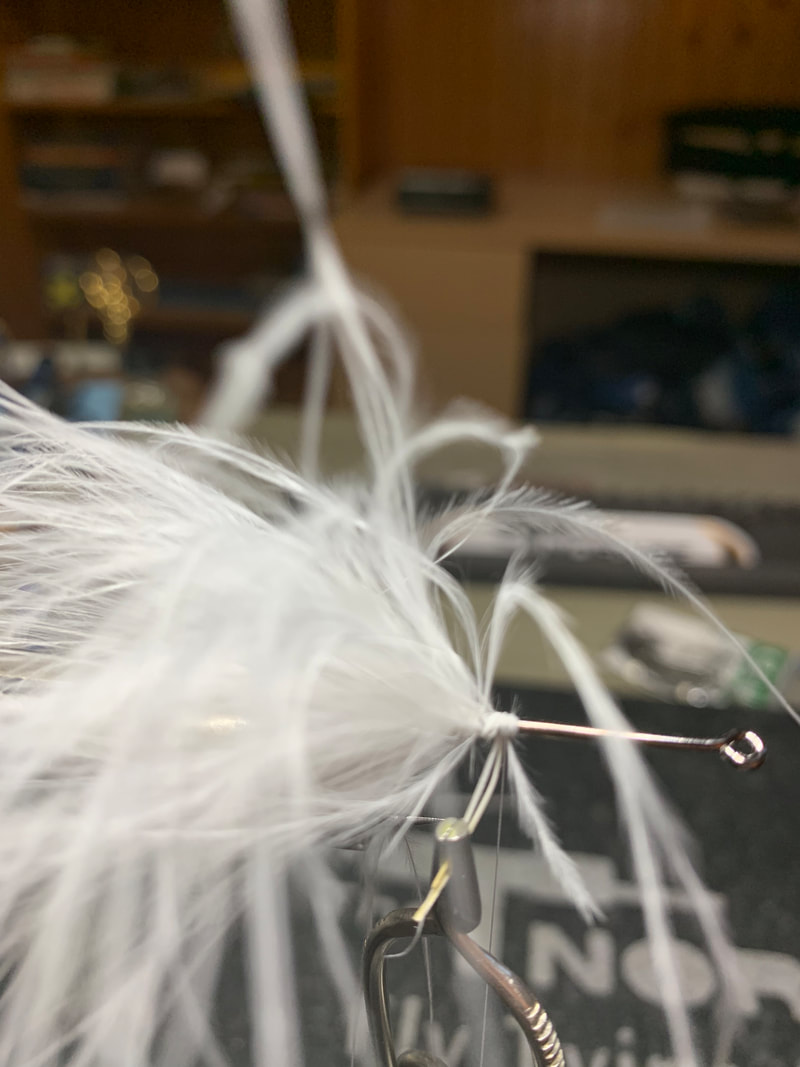 Advance the thread forward to just past the tie in point, half hitch and place the bobbin on the thread post. I like to grab the feather stems with a pair of hackle pliers. Now wrap the feathers forward (or spin your Norvise) taking care not to trap any of the feather under the stem. Once you have wrapped the whole 3/4 of an inch of feather tie off the bare stems with several tight wraps. 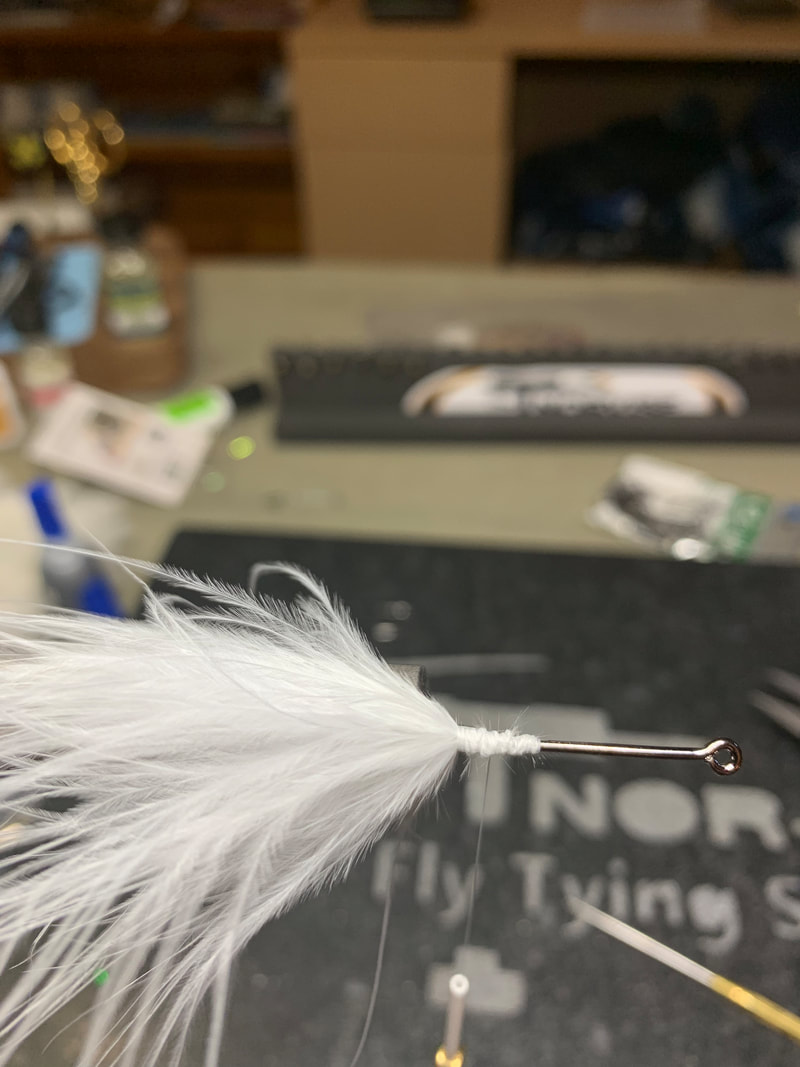 Marabou gets a bad rap in my opinion for not being durable, here is how to make it very strong. Use your bodkin or a tooth brush and stroke back all the marabou, Take care to make sure they are evenly distributed around the hook shank. Now, take your thread and COMPLETLY cover the stems with thread. A drop of Flex Cement here is a fantastic idea. By covering the stems you are protecting the weakest part of the tail. If the stems don't blow up, the tail will last a very long time. I have tales tied in this manner with well over 50 Pickerel landed and the tails look almost brand new. Remember, a Pickerel is a cousin of the Pike and Musky!  Now, hold the feather and the Polar Chenille together with a pair of hackle pliers at the base and spin them together. This will make a dubbing brush of sorts. This "Complex Twist" will blend the feather and the polar chenille together, it will also strengthen the feather by wrapping the core of the polar chenille around the feather stem again, protecting the weakest part of the brush. You will have to use a brush of your bodkin to pick out the fibers. Spin a little and brush, spin and brush, etc. Note; at the bottom there is a link to a video showing how to do this step by spinning your Norvise, it is pretty cool.  Now we are going top build the collar. We will use Senyo's laser dub, red on the bottom and white on the top. Select a small bit, about the thickness of a match stick. Align the the fibers and tie the clump to the hook in the middle. Make sure the material is distributed 180 degrees around the bottom of the hook. Repeat this step in the top with white laser dub.  Cover the entire front of the hook with several layers of thread. This will give the glue something to grip on TEST FIT THE HEAD FIRST! once you are happy with it use ZAP-A-Gap to glue the head to the hook. Warning; you have 1 shot and about 7 seconds before the glue takes hold! Get the head on and situated quickly, if not you may be cutting a perfectly good popper head off and trying again! This is one of my favorite of my designs. I say "My" designs, The palmered tail I learned from Rich Strolis and the body I learned from Eric Snyder. Thanks guys for being part of a great pattern! Till next time...
Tight lines - Tim For a link to a quick video on how to do the complex twist using the Norvise, click HERE. |
Archives
June 2024
Categories
All
|

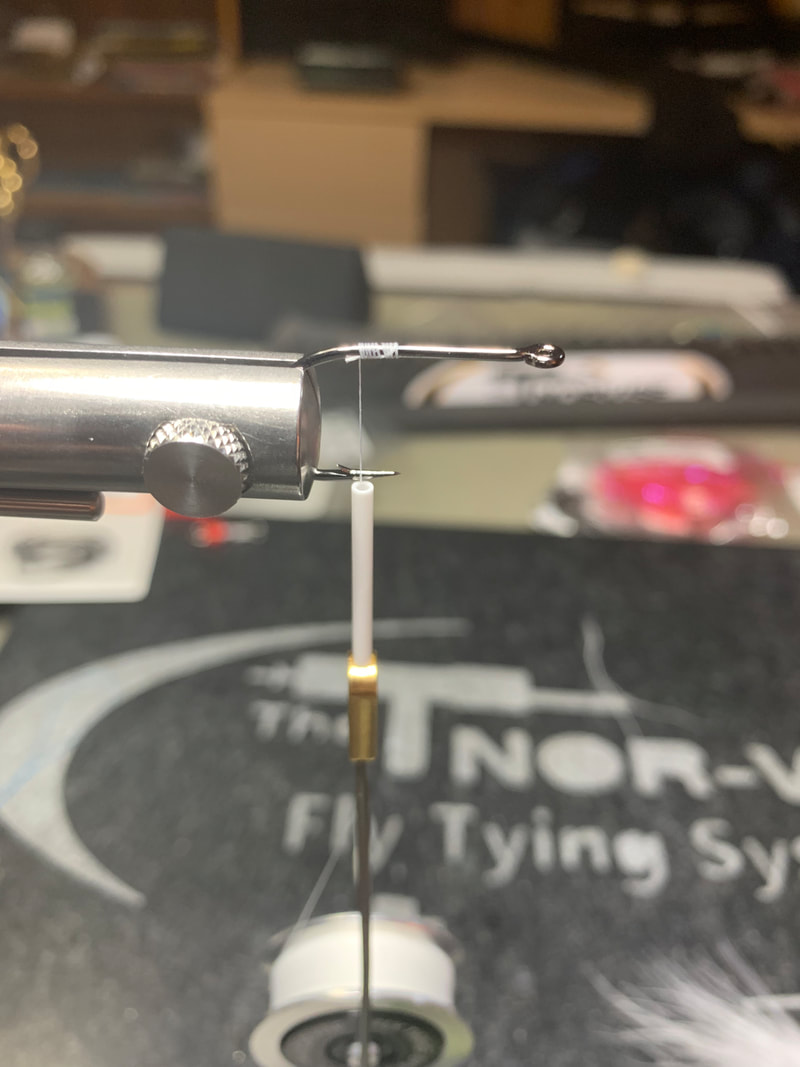




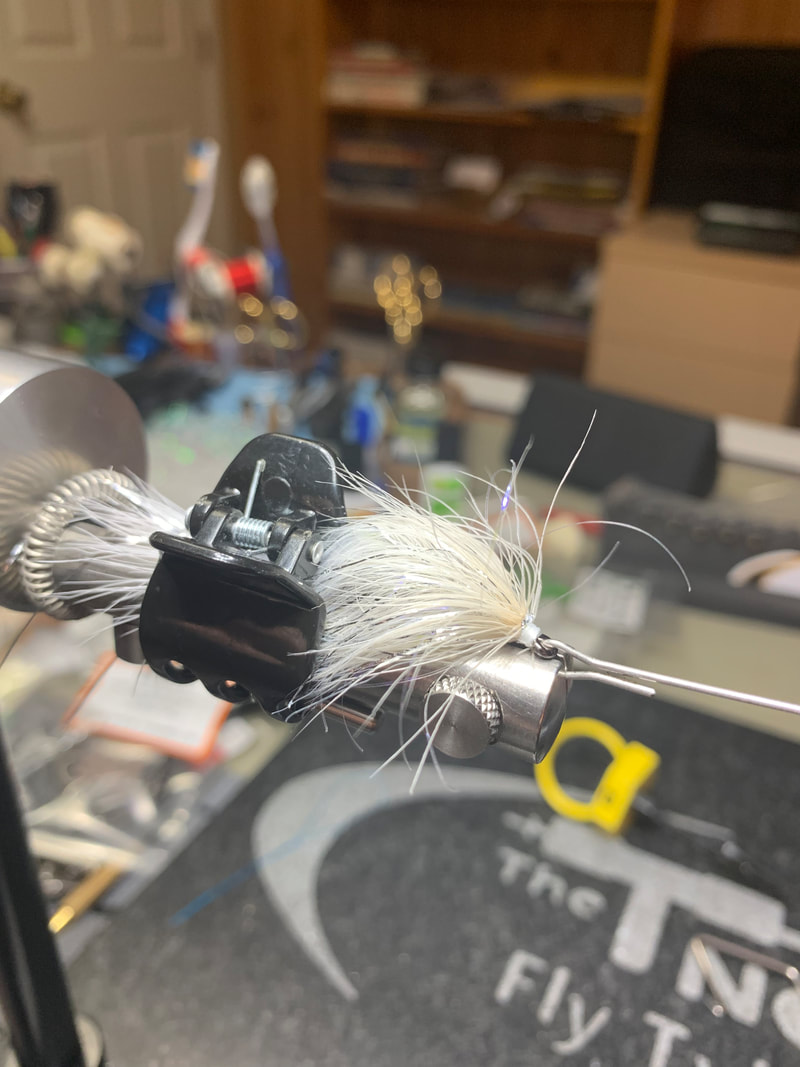














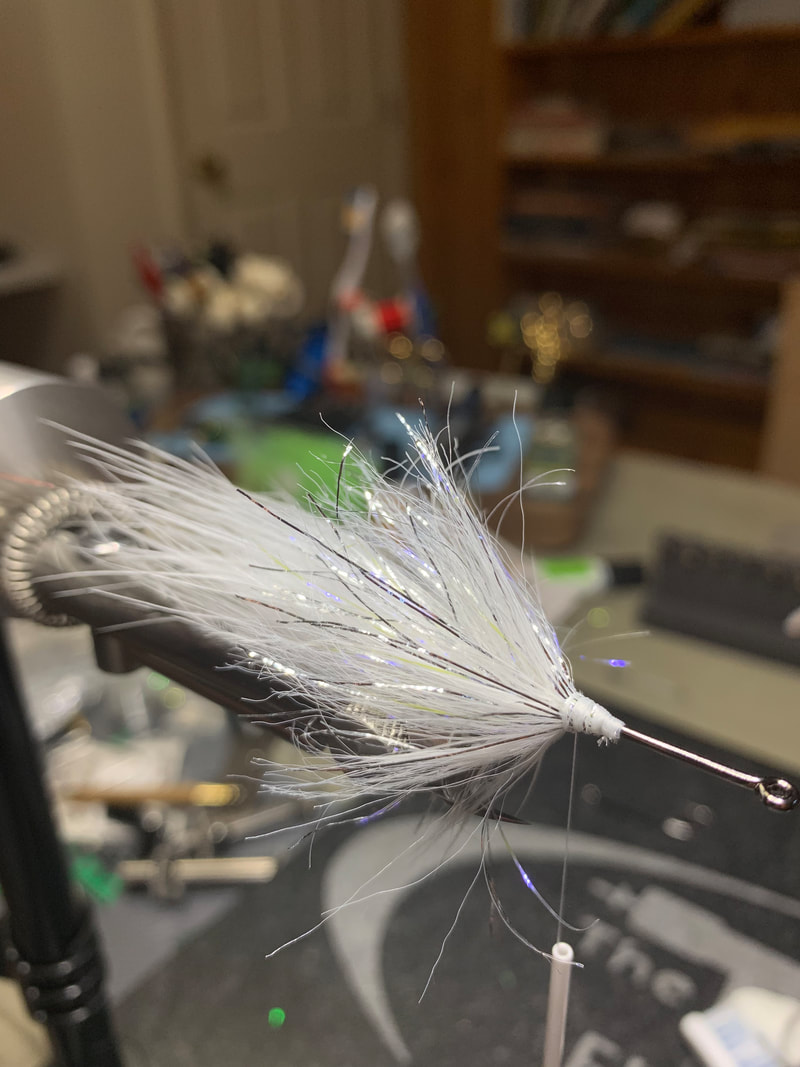


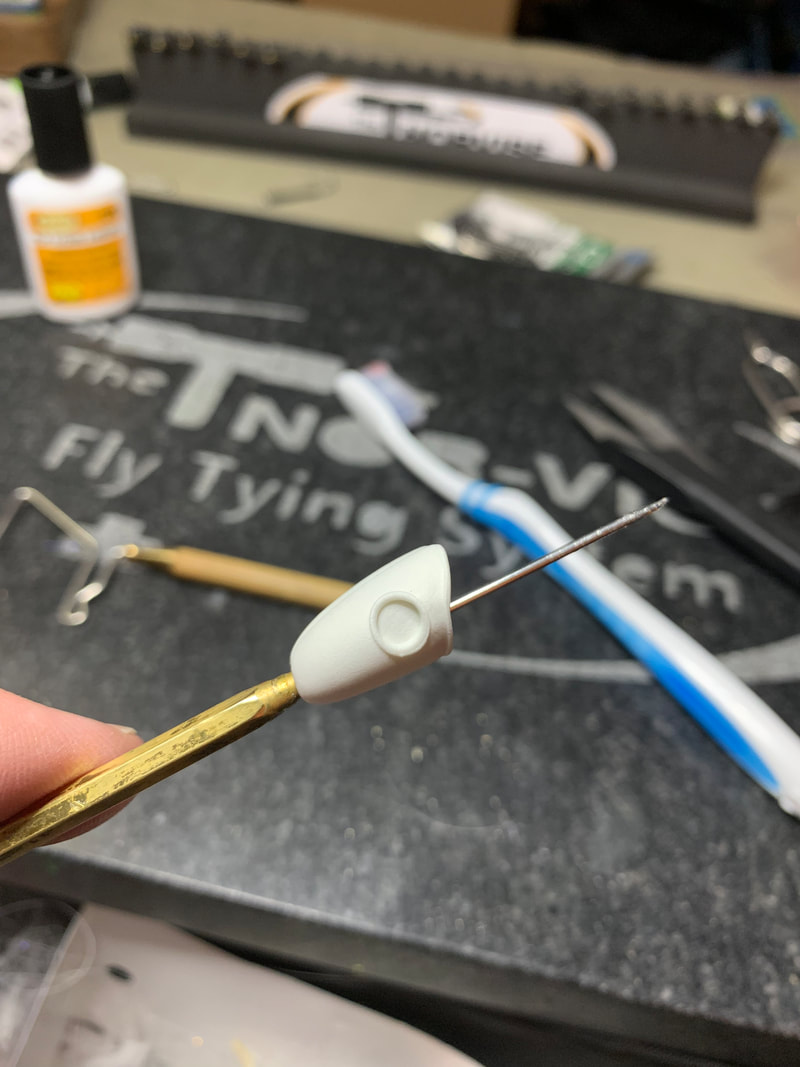
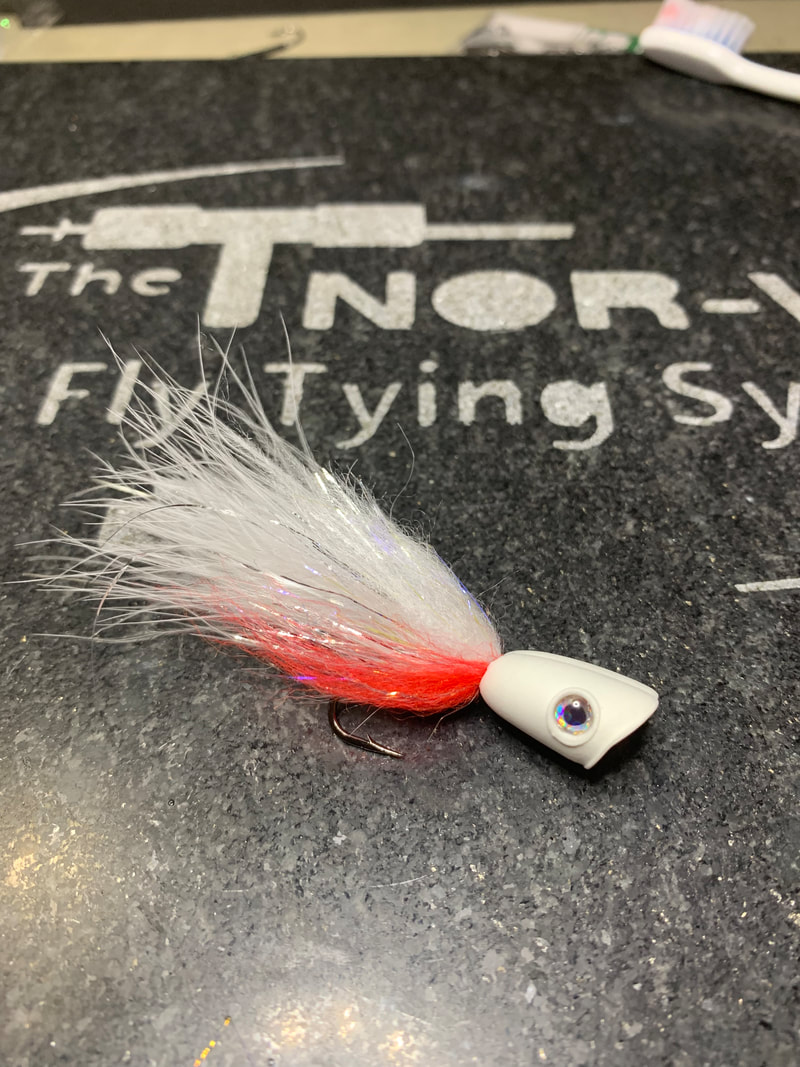


 RSS Feed
RSS Feed
